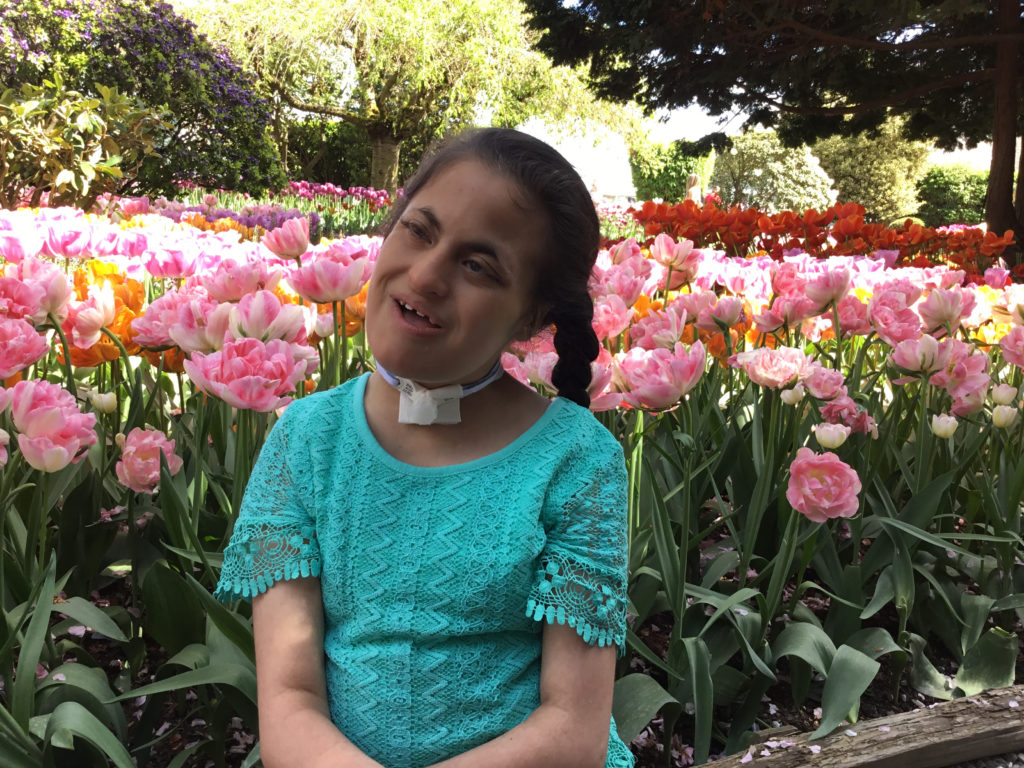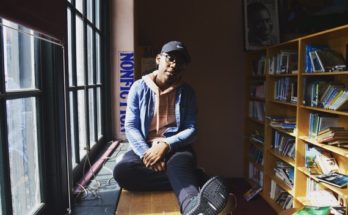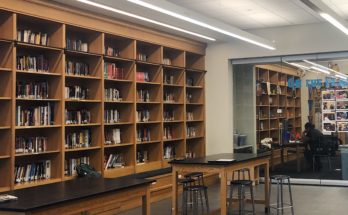
The 2019-2020 school year has basically ground to a halt for many special education students, but for 20-year-old student Kristina “Krissy” Krotzer, the coronavirus all-school shut down could mean an abrupt end to her high school education.
Krotzer lives with her mom, Terre, in Pierce County, Washington, nestled against the Cascade mountains. Virtual learning at this point, said Terre, could mean a premature end to Kristina’s schooling.
In Washington, Kristina will age out of the special education program she’s in within the next academic year. Students’ Individualized Education Plans begin to focus on transitioning from high school to adult life at age 16, and students can continue their time in high school through the school year during which they turn 21.
For Kristina, that means the next academic year would be her last year of high school. Even though virtual learning cannot provide many of the classes and therapy Kristina relies on, Krotzer said she would be hesitant to send her daughter back to in-person schooling in the fall. Kristina is unable to keep a mask on and Krotzer is concerned about the risks of her daughter catching the virus without the proper protection.
Kristina has Trisomy 18, also known as Edwards syndrome, which causes developmental delays because of the presence of an extra chromosome 18. The syndrome affects both physical movement and communicative abilities.
Trisomy 18 is a rare disease that affects about 1 in 5,000 infants, according to the National Library of Medicine. Just 5% to 10% of children who are born with the condition live beyond one year. Trisomy 18 can cause multiple life-threatening medical conditions at once, which is part of why Krotzer would be hesitant to send Kristina to school in the fall.
“We’ve worked all these years to keep her healthy and safe,” Krotzer said. “We’ve already taken a chance at school knowing that it’s a giant petri dish, but now I don’t know that just social distancing is going to make the classroom safe enough for her to participate.”
While Krotzer said she wishes that some sort of extension could come about for her daughter’s education—maybe another full year of school after a vaccine is available for the virus—she knows many other seniors in high school and college are also feeling like their time has been cut short, missing out on prom and graduation ceremonies.
“I’ve already been looking at this cliff coming anyway,” she said. “Whether it’s this year or next year, it’s gonna be over for her. It’s just hard because we don’t know what the next phase looks like for her yet.”
While Krotzer is grateful that her daughter still has access to school online, she said not all special education techniques translate through Zoom.
Kristina is nonverbal, non-ambulatory and has some issues with her eyesight. Krotzer said she can tell her daughter is enjoying seeing and hearing her classmates through Zoom, but it does not compare to the social experience she had at school in-person.
“Most of what she does at school really requires up close and personal instruction and requires her to be present in the building for it to take place,” Krotzer said. “Her biggest thing she’s gotten from school as I can see it has always been the social aspect, because she loves being around her typically-developing peers.”
While Kristina had better access to speech therapy and physical therapy at school, her mother says the ability to socialize with her peers was the most important thing to her.
“I know every parent is going through this,” Krotzer said. “I wasn’t trained to be a teacher. I especially wasn’t trained to be a special education teacher, although I wasn’t trained to be anything when I jumped into this 20 years ago and have learned along the way.”
But virtual learning poses challenges to special education even for those with formal training.
“Do the best you can.” This is the closest thing to official guidance an Illinois special education teacher said she has received as a teacher and as a parent since the global coronavirus pandemic has caused the shut down of schools across America.
“I’ve been doing virtual learning with all three of my kids and they’re all responding to it differently and there’s challenges with every single one of them,” said Kelly Hernandez, an 11-year veteran teacher at Lyle Elementary in Bridgeview, Illinois. “My caseload that I work with providing virtual learning for students presents challenges within itself.”
Hernandez, an acquaintance of Krotzer, is also a parent of three children who each have a different form of physical disability or communication disorder. She and Krotzer met through a support network for parents of children with Trisomy 18. Her oldest daughter, who is 17, has the rare disease.
Her son, who has a communication disorder, just turned 6, and her youngest daughter is autistic and is 4 years old.
Hernandez said she has been lucky to use her industry knowledge from having worked as a special education teacher to advocate for her own children. The universe of schooling options varies in every state for parents and students with concerns about accessibility, and Hernandez said she might have been a little lost had she been a layperson.
“It’s different everywhere,” Hernandez said. “So deciding what types of schools to pursue, every state does it differently.”
While physical accessibility is not as prevalent an issue for Hernandez currently, she says the rapid transition to virtual learning has meant many changes both as a teacher and a parent. She spends her time coordinating individualized lesson plans for her Lyle class of five kindergarteners at school, supervising her own children as they learn online, and getting very little sleep.
Although Hernandez has a small class size of five students to teach for Lyle, she said her caseload still requires intensive efforts to cater to each student on an individual level, since each child has different needs. To some extent, Hernandez says some days they just cannot complete everything on the lesson plan and, for right now, that has to be okay.
She said during these unexpectedly challenging times, it’s more important to her that her students, and her own children, are able to stay as happy as possible, rather than be brought to tears by the pressure of adapting to a new platform for special education.
“The DOE isn’t really putting information out there that says ‘This is what you need to do,’ or ‘This is what’s required,’ especially working in special education, because a lot of the supports that we provide to students you can’t provide virtually,” Hernandez explained.
A lot of the activities and websites schools suggest to parents to reference at home fail to serve students in special education classes.
“They’re designed for a learner who is able to sit at a computer and do something,” Hernandez said. “Schools were not prepared. The curriculum department did not have a contingency plan for something like this.”



